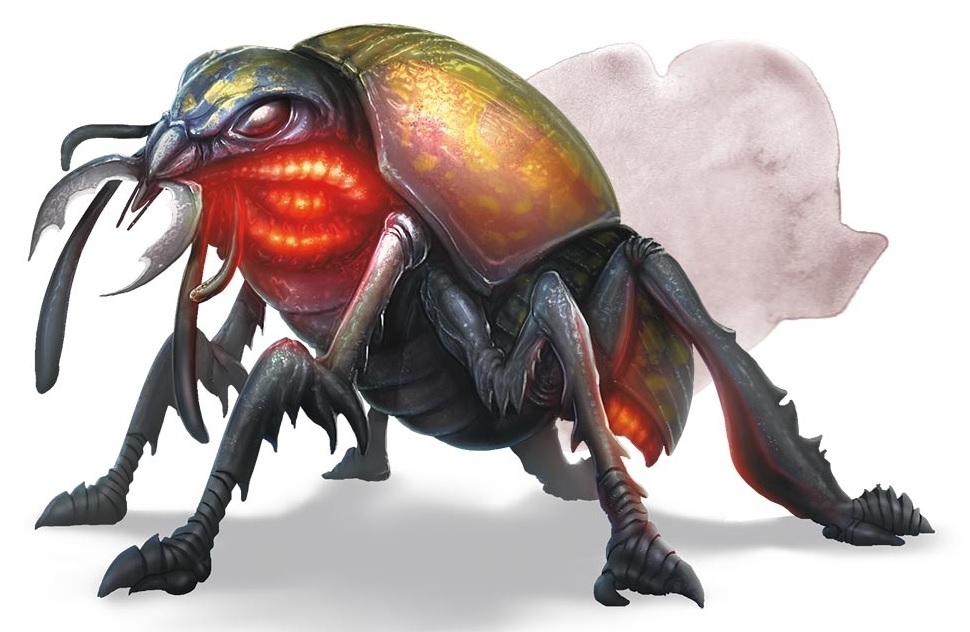Fire Beetle
| Species | insect (glandulae ignis) |
| No. Appearing | 2–16 |
| Behaviour | parasocial |
| Range | subterranean |
| Size | 2½ ft. long |
| Weight | 40 lbs. |
| Intelligence | 0 |
| Armour Class | 4 |
| Hit Dice | 1+2 |
| Action Points | 5 |
| Max. Stride | {{{stride}}} |
| THAC0 | 20 |
| Hp/Die | d4 |
| Attack Forms | pincers |
| Damage | 2–8 |
| Special Attacks | calling, glands |
These subterranean beetles are carnivorous meat-eaters, able to strip a body to its bones within a few days, consuming even the entrails in their voraciousness. Attacks are usually initiated by a single creature, which when hurt will release a pheromone into the air calling others of its nest. Within a few rounds, the arriving beetles will swarm intruders. Fire beetles are dangerous to 1st level parties.
Every 10–15 months, a fire beetle obtains a large host for its eggs (at least 150 lbs) and kills it. It will then cocoon the body in strands of a fibrous, waxy mucus that the beetle produces; then the body is injected with eggs and buried. A brood of 4–40 fire beetle larvae will occur. Those larva that emerge first and achieve full movement will eat the others, producing 14 to 16 fat larva that are hot to the touch; these will become beetles in about a week.
Their mucus is created from eating subterranean roots and plants. The beetle will spread this mucus throughout their lair, creating a waxy surface that will cover floors, walls and ceiling, and cover any objects laying about their chosen lair. The stiffened mucis is spongy to walk on but have no appreciable effects on combat.
Fire beetles have two glands that are located above or below the eyes, depending on the variety. These will give off a red glow to a radius of 25 ft., which when reflected by the mucus layer will produce conditions similar to full moonlight. This makes the beetle somewhat vulnerable to intelligent creatures. However, those carrying the glands should also be concerned, for the light will also emit a pheromone attracting other fire beetles. If the glands are removed within two hours of the beetle's death, they will continue to glow for 3-36 hours; if left in the body, the rotting beetle's corpse will cause the glands to sour.
Left alone, the light of the beetle's gland will equal that of a torch; however, if the cantrips freshen, polish or warm are cast on the glands, this illumination will last for 2-8 days. If the gland is drained by an alchemist while still glowing, the fragile substance inside is an important ingredient for potions and magic items. Active glands can fetch between 5–15 g.p. each, depending on the market.
See Bestiary
